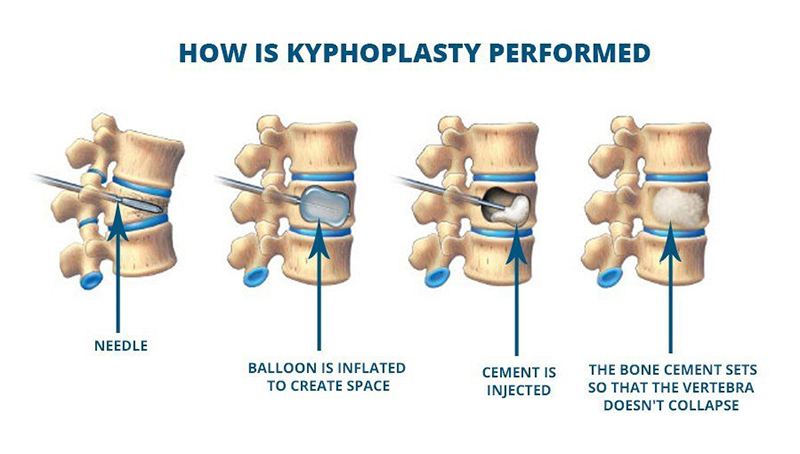Categories
This Kyphoplasty Balloon Catheter is mainly used in Percutaneous Kyphoplasty(PKP) operations to dilate the vertebral body and form a cavum which is for injecting bone cement to recover and stabilize the vertebral body.
1. Characteristics:
· Kyphoplasty Balloon Catheter is designed for correcting compression fractures and restoring vertebral body height. Doctors should choose appropriate balloon for dilation according to fracture types;
· Different OD of the sheath can be applied to the different working channels to realize accurate dilation. Different shapes of the balloon can adapt to different thoracic vertebra, lumbar vertebra as well as other types of fractures;
· The balloon materials feature excellent characteristics, such as fine supportiveness, biocompatibility, biological persistence, surface anti-biodegradation, and environmental stress cracking resistance;
· Standard four-wing pleating process ensures excellent passability after repeated inflation;
· Each balloon has passed the pressure and seal test before leaving the factory. Strict quality control measures minimize the risk of balloon burst and leakage.
2. Specifications:
No. | Model | Size Type | Working Channel I.D. (mm) | Overall Length (mm) | Rated Inflated Volume (cc) | Constrained Burst Pressure (PSI) |
1 | KB0210 | 8G-10 | ≥3.65 | 315 | 4 | ≥400 |
2 | KB0115 | 8G-15 | ≥3.65 | 315 | 4 | ≥400 |
3 | KB0120 | 8G-20 | ≥3.65 | 315 | 6 | ≥400 |
4 | KB0210S1 | 11G-10 | ≥3.10 | 280 | 3 | ≥400 |
5 | KB0115S1 | 11G-15 | ≥3.10 | 280 | 4 | ≥400 |
6 | KB0120S1 | 11G-20 | ≥3.10 | 280 | 6 | ≥400 |
3. What is kyphoplasty:
A compression fracture or a break in one of your vertebra can be painful. It can also make it difficult to move freely. That’s because a break can result in bone fragments rubbing against each other.
Surgery can help treat such fractures. For example, kyphoplasty and vertebroplasty are minimally invasive procedures that are often performed together. Usually, they can be done without a hospital stay. In vertebroplasty, a doctor injects a cement mixture into the bone to give it strength.
Kyphoplasty makes room for the mixture. In this procedure, a doctor inserts and inflates a balloon to create an opening for the mixture. The balloon is removed after the cement is injected. Kyphoplasty is sometimes referred to as balloon vertebroplasty.
Both of these procedures are more likely to be successful if done within two months of a fracture diagnosis. They can help relieve pain and improve mobility when other measures fail to provide relief.

Because kyphoplasty and vertebroplasty are surgical procedures, your doctor will probably order some blood tests before the day of your surgery. Imaging tests such as an X-ray or MRI scan will help your surgeon see the area or areas that need repair.
In preparation, an intravenous line (IV) will be placed in a vein in your arm to deliver anesthesia. You may also receive pain and anti-nausea medications, as well as antibiotics to prevent infection. You’ll probably also be connected to heart, pulse, and blood pressure monitors.
For these procedures, you need to lie down on your stomach. The area in which the needle will be inserted is shaved if necessary and then cleaned and sterilized. A local anesthetic may be injected in the same place.
Your surgeon then performs these steps:
1. The surgeon inserts a hollow needle (trocar) into your skin. With the aid of fluoroscopy, a type of X-ray, they guide the needle through your muscles and into the correct position in your bone.
2. They next insert an inflatable balloon into the trocar.
3. The balloon is then inflated to create the space needed for the bone cement.
4. Once the space has opened up, the mixture is injected to fill it up. Imaging tests will help the surgeon confirm that the mixture is distributed properly.
5. Once the cement is in place, the needle is removed.
6. The area is bandaged. Stitches won’t be necessary.
7. Your IV and monitoring equipment are removed.
If only one vertebra is being treated, kyphoplasty usually takes less than an hour.




 CopyRight © 2024 - Jiangsu Changmei Medtech Co., Ltd.All rights reserved
Sitemap
All tags
Designed by Zhonghuan Internet
CopyRight © 2024 - Jiangsu Changmei Medtech Co., Ltd.All rights reserved
Sitemap
All tags
Designed by Zhonghuan Internet